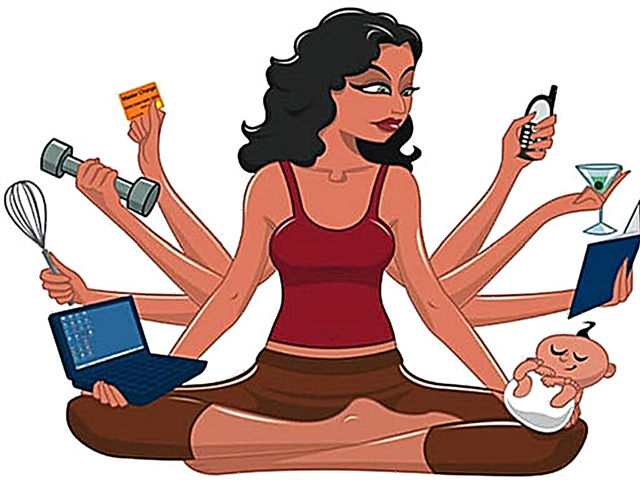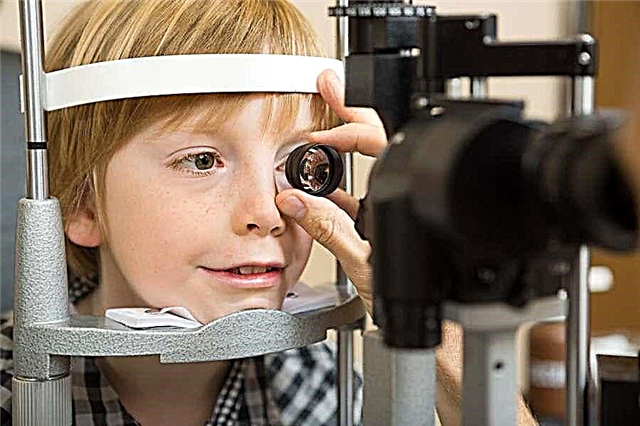
In the second half of their life, children become active, some even restless. They are interested in everything, they want to move, move, change the position of the body. Toddler learns new skills rapidly. You can help him with general strengthening exercises, gymnastics, which includes a set of exercises for a certain age.
In this material, we will talk in detail about how to do gymnastics with a child from 7 to 10 months.

What should be considered?
Gymnastics for the baby should not be burdensome, and the physical activity is exorbitant. Therefore, when planning a set of exercises, it is imperative to take into account the characteristics of the character, the state of health of your baby, the degree of his readiness to master a particular motor skill.
At 7 months, if your son or daughter is not sitting yet, you can add exercises to strengthen the back, abdomen, arms and neck. If the child is confidently on all fours, you can add exercises that will stimulate crawling.
At 10 months, you can move on to exercises to strengthen the legs, because soon the baby will have to take his first steps, and some children are already trying to do them. Be sure to take into account the already existing skills of the toddler in order to build a new set of activities on their basis.

It is clear that exercises such as "Bicycle" and "Frog", which delighted your child at 3-4 months, are now unlikely to be perceived with pleasure, since not every baby will agree to lie quietly in the second half of the year during the waking period.
Use the child's desire to move, saturate the program of gymnastic classes with active exercises that require the child's participation in everything that happens.
Most children at 8-9 months are well acquainted with their body, they know where the arms are, where are the legs, they perfectly understand simple familiar phrases, and therefore gymnastics for the child should be made as clear and simple as possible.
Exercises for crawling, sitting, standing, walking should be accompanied by cheerful and good-natured comments from the mother, this will give the child a feeling of play, will interest him, he will be happy to do funny and useful techniques.

If the toddler has pathologies of the musculoskeletal system, neurological diseases, other congenital or acquired ailments, it is important to add new exercises with the permission of an exercise therapy specialist or attending physician, since such children need a very specific load on specific muscle groups, depending on the diagnosis.

Why do gymnastics?
Gymnastics, as already mentioned, will help your baby to more actively master new motor skills, prepare his muscle and bone tissue for constantly increasing loads, for standing, and the first independent steps. Gymnastics develops speech, fantasy, partially satisfies the child's needs for emotional and tactile contact with the mother.
Children who regularly do exercises improve blood circulation, coordination of movements and the vestibular apparatus. Such children are less likely to get sick, sleep better, and, as a rule, do not experience problems with appetite.

Exercises for babies
In the complex of gymnastics, include exercises that you may have done with the baby at a more tender age, provided that the baby does not mind them. If you are not tired of the exercises, it will be enough just to add new techniques to the complex that correspond to the age of the little one.
7-8 months
Such children should be encouraged to crawl and sit. Here are some effective exercises to stimulate these skills.
- "Corner"... Stretch out the index fingers of your hands to the child on your back. When he grabs them, pull your arms slightly towards you. Do not lift the baby forcibly, let him, based on the strength of his arms, raise the torso as much as muscle development will allow him. Do not put the child. When the angle is 45 degrees, gently lower the child back down. Repeat the exercise 5-10 times.


- "Support Crawl"... Place the little one on your stomach, bring your hand under your tummy and start lifting your palm smoothly up. When the baby is on all fours, hold him in this position for about a minute. Don't loosen up your hand. You can complicate the exercise when the baby starts to stand on all fours more confidently. Put a toy with a sound in front of the baby and support the baby under the tummy while he tries to reach it. If at the same time he begins to rearrange the arms and legs, consider that he will begin to crawl in the near future.


- "Wheelbarrow". This exercise strengthens the muscles in your arms and neck. Take the baby, lying on his stomach, by the legs and slowly move forward with him along the floor. It is necessary to ensure that the child "walks" on his hands, rearranging them to move.
Swaying on the ball, attempts to get the toy while lying on the fitball with the stomach with the obligatory support of the parents by the legs are useful.


9-10 months
Add exercises to strengthen the feet and lower legs to the complex of children of this age. Prepare your child to stand and walk on their own. You can also add seated exercises. Here are some interesting tricks.
- "Snowball". Put the gymnastic ball on the floor, put the little one on the legs, put the handles on the ball, constantly hold the baby under the armpits, but not so that his legs dangle in the air. Begin to move forward, slightly tilting the child's body towards the ball. It is necessary to ensure that the child takes the initial steps with support and support with his hands on the ball, turning it over.

- "Baton". Teach your son or daughter to move more, you will be helped by a small ball, a stick, from which, if desired, you can make a relay race. Put the object down and crawl with the baby on all fours to her. Give your toddler the first chance to catch the stick or ball. Rejoice sincerely and emotionally at his victory.
- Stomping and Bending. Place the child with his back to you with his feet on yours. Support the little one under the armpits. Start taking steps. When you reach the toy on the floor, hold the child so that he can bend over and grab it himself. Then start moving towards a new goal.


- "The Stock Gnome". For this exercise, you will need a few small balls that fit in your child's palm and a basket or box. Place the baby. Sit on the side of it, for example, on the right. Stretch the ball to the baby, he will take it with his right hand. It is important that the child turns his body half-turned to you. Next, the baby needs to shift the ball to the other hand and put it in the box on the left of it. At this moment, you will prepare a new ball, with which you will need to do the same.
Children of this age are great at active exercises with rhythmic music, some even begin to squat or sway to the beat. Take advantage of this during your classes.

Useful Tips
- Do without clothes, if possible, do gymnastics in the fresh air in the summer. So it will be possible to combine air baths and hardening with useful charging.
- Do not exercise on days when the child has a fever, teething, or is not in the mood to play and communicate.
- If there are older children in the family, ask them to "play along" with you, to take part in active exercises for children from 8-9 months. At this age, imitation is developed, and the baby will learn new games and techniques much faster if he sees how others do it.
- Always start gymnastics after a preliminary session of a light massage.
- In order not to overexcite the baby's nervous system and not disturb his sleep, do exercises only in the morning. In the evening you can have a soft relaxing massage and take a bath.

You will learn more about gymnastics for children 7-8 months old in the following video.



